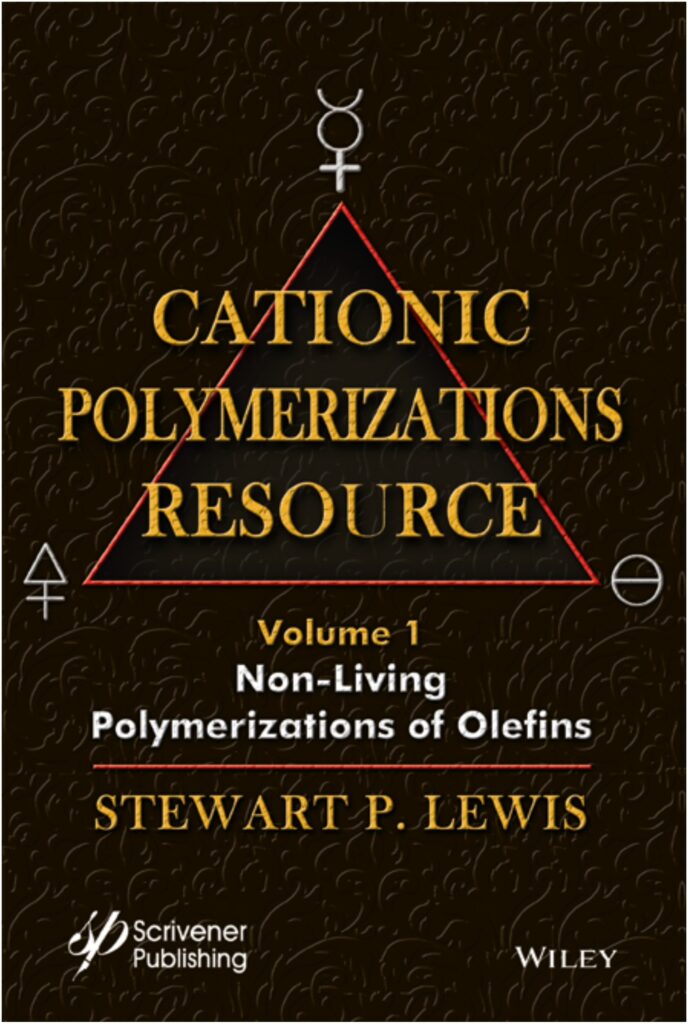Previously it was mentioned on this website and on www.pyramidpolymers.com that iodine and potentially HI (amongst other initiators) appear to be capable of inducing the living polymerization of a variety of monomers. Upon review of some data more evidence of the potential for the first truly living aqueous cationic polymerization have emerged (Table 1). When polymerization has little chain transfer both the apparent and theoretical number average molecular weights (Table 1, entry 2) show little discrepancy. Doubling of the reaction time leads to a doubling in polymer yield (Table 1, entry 5); however, the apparent molecular weight is lower than the theoretical. These results indicate that the number of active species are preserved throughout polymerization even after very long reaction times (i.e., days) albeit there is some chain transfer that occurs. As we mentioned earlier, a number of approaches can be used to help suppress the impact that such side reactions have and thus give rise to well-defined polymers.
Monthly Archives: February 2022
Summary, 6th International Conference on Catalysis and Chemical Engineering. Dr. Lewis’ Talk on 2-24-22
As announced on www.pyramidpolymers.com, Dr. Lewis discussed a number of new research findings that he made at the 6th International Conference on Catalysis and Chemical Engineering. He also chaired the session he spoke in. The production of highly reactive polyisobutenes (HRPIBs) with an exo-olefinic end group content of 97% as made with the first truly recyclable initiator system was touched upon. High recovery of spent Lewis acid (up to 100%) is a common trait and solventless polymerization can be employed at room temperature with good molecular weights and yields. Unlike traditional Lewis acids (e.g., BF3), the one used by Lewis are not hazardous and do not require specialized equipment to handle them.
Another topic that was covered is a unique processing method that allows for the solubilization of metal halides in aliphatic solvents. Such solutions are highly effective in inducing the polymerization of olefins and further more are capable of controlled activity that allow their usage in neat monomer as well as at reaction temperatures as high as 50 °C. The aqueous polymerization of alkenes using superacids generated in situ was also touched upon. A potential replacement for MAO as developed by Lewis was mentioned in addition to a recapping of the results on the production of isobutene based polymers using heterogeneous initiators based on aluminoxanes.*
*A public disclosure of the unique activity of MAO supported on boric acid was made where it was suggested that such materials should be explored for use in coordination polymerization if they haven’t already been studied.
2-16-22 Update on Book Series Authored by Dr. S.P. Lewis
2022 should be an interesting year. It is looking like printing of a series of books written by Dr. Lewis will begin before it concludes. The main title is “Cationic Polymerizations Resource: Non-living Polymerization of Olefins.” The work will be divided into a minimum of three volumes with an approximated page count of around 1,500 pages and 4,000 references.
IF YOU WANT TO UNDERSTAND CATIONIC POLYMERIZATION GET THESE BOOKS
One of the frustrating things about this field is that no book presents it in a manner such that any chemist can walk away with a good understanding of the topic. This work differs greatly in that anyone with a basic understanding of chemistry can master the field after reading it. You don’t have to have a polymer science degree or even a Ph.D. in chemistry to understand the material contained in these books. At the same time this book series contains such a wealth of information that even those who have practiced this technique for many years can learn something new. Updates on the generation of gallery proofs, final proofing, printing, etc. will be provided as things progress.

